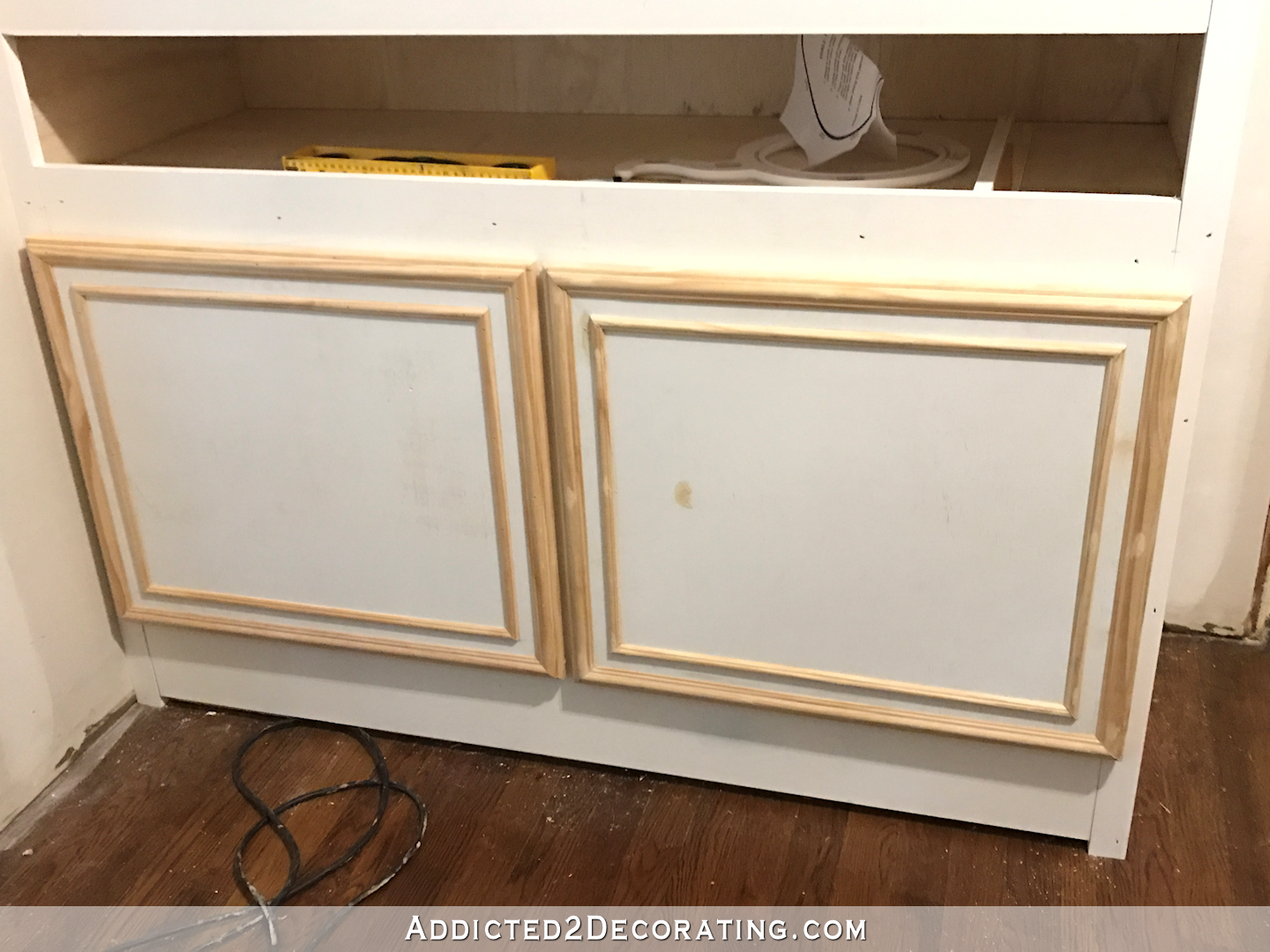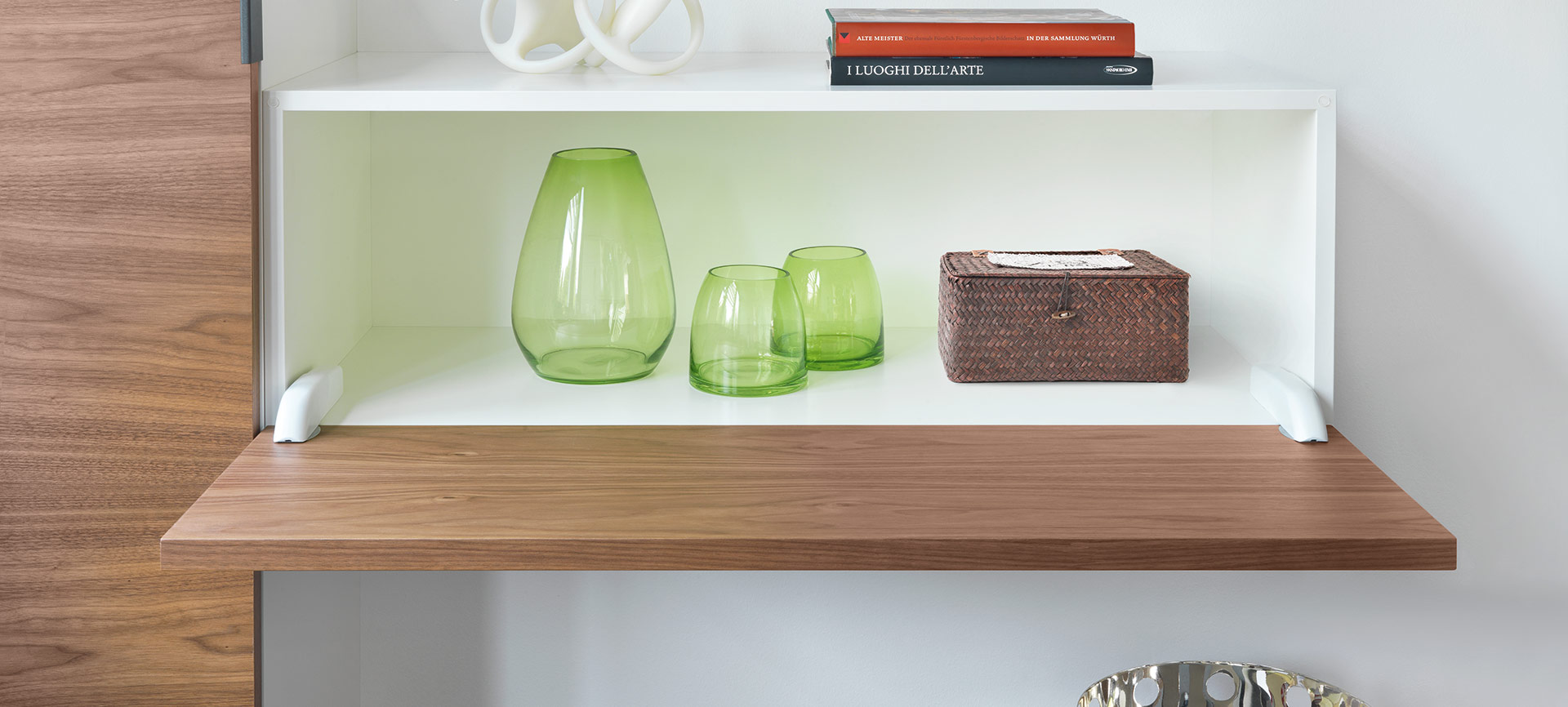Planning and Design for a Drop-Down Cabinet Door: How To Make A Drop Down Cabinet Door

Designing and building a drop-down cabinet door requires careful planning to ensure functionality and aesthetics. Consider the weight of the door, the type of hinges, and the overall style of your cabinetry when making your selections. Proper planning will lead to a smooth and efficient installation process.
Three Drop-Down Cabinet Door Mechanisms
Choosing the right mechanism is crucial for the success of your drop-down cabinet door. Here are three distinct designs, each with its own material requirements:
- Mechanism 1: Simple Gravity-Assisted Drop-Down. This design utilizes a simple counterbalance system, typically employing a spring or weight attached to the door. Materials: Cabinet door (wood or other material), hinges (heavy-duty), spring or counterweight (depending on door weight), mounting hardware (screws).
- Mechanism 2: Hidden Hinge with Gas Struts. This sophisticated design uses hidden hinges and gas struts for smooth and controlled opening and closing. Materials: Cabinet door (wood or other material), hidden hinges (concealed within the cabinet frame and door), gas struts (sized appropriately for the door weight), mounting hardware (screws).
- Mechanism 3: Simple Hinge with Cable and Pulley System. This mechanism uses a simple hinge and a cable and pulley system to lift and lower the door. Materials: Cabinet door (wood or other material), hinges (standard hinges), cable (strong, thin steel cable), pulleys (two or more, depending on design), mounting hardware (screws), weights or springs for counterbalance.
Building a Drop-Down Cabinet Door with Hidden Hinges
This step-by-step plan Artikels the construction of a drop-down cabinet door using hidden hinges and gas struts. Accurate measurements and careful assembly are key to a successful project.
Materials List:
- Cabinet door (12″ x 18″ x 3/4″ plywood, for example)
- Hidden hinges (2, suitable for the door weight and size)
- Gas struts (2, sized appropriately for the door weight)
- Screws (various sizes for wood and metal)
- Wood glue
- Wood filler
- Sandpaper
- Finish (paint or stain)
Dimensions (Example):
- Cabinet Opening: 12″ wide x 18″ high
- Door: 12″ wide x 18″ high x 3/4″ thick
Step-by-Step Plan:
- Cut the cabinet door to the desired dimensions.
- Install the hidden hinges on the door and cabinet frame according to the manufacturer’s instructions.
- Mount the gas struts, ensuring proper extension and retraction. Precise placement is critical for smooth operation.
- Sand and finish the door to match your existing cabinetry.
- Test the operation of the door. Adjust gas strut tension if needed.
Comparison of Drop-Down Door Hardware Options
This table compares three common drop-down door hardware options based on cost, ease of installation, durability, and aesthetic appeal. The best choice depends on your specific needs and budget.
| Hardware Option | Cost | Ease of Installation | Durability | Aesthetic Appeal |
|---|---|---|---|---|
| Simple Hinges and Counterweight | Low | Easy | Moderate | Simple |
| Hidden Hinges and Gas Struts | Medium | Moderate | High | Clean, Modern |
| Cable and Pulley System | Medium-High | Difficult | High | Customizable |
Construction Techniques for a Drop-Down Cabinet Door

Building a drop-down cabinet door requires careful planning and precise execution. This section details the crucial steps involved in creating a functional and aesthetically pleasing door. We’ll cover frame construction, hinge selection and installation, counterbalance mechanisms, and door attachment methods.
Cabinet Door Frame Construction
The frame forms the foundation of your drop-down door. Precise cuts are essential for a properly functioning door. Start by selecting your wood – a sturdy hardwood like maple or oak is recommended for its durability. Cut the four pieces of wood to the desired dimensions for the frame, ensuring perfectly square 90-degree angles. Use a miter saw for accurate cuts. After cutting, assemble the frame using wood glue and appropriate screws (like pocket screws for a clean interior). Clamp the frame tightly while the glue dries to ensure a strong, square joint. Once dry, lightly sand the frame to remove any excess glue or imperfections.
Hinge Selection and Installation
Several hinge types are suitable for drop-down doors, each with its own advantages.
- Concealed Hinges: These hinges are mounted within the frame and door, offering a clean, modern look. They require precise mortising (creating recesses for the hinges) in both the frame and the door. A router with a suitable bit is ideal for this task. Install the hinges according to the manufacturer’s instructions, ensuring proper alignment for smooth operation.
- Piano Hinges: These long, continuous hinges offer robust support and are easy to install. They are visible, so consider the aesthetic implications. Attach them using screws, ensuring they are evenly spaced and securely fastened. The hinges should be long enough to span the entire length of the door for maximum stability.
- Heavy-Duty Hinges: For larger or heavier doors, heavy-duty hinges are necessary. These hinges often feature reinforced construction and increased load capacity. Installation is similar to other hinges, but extra care should be taken to ensure they are properly secured.
A diagram showing the placement of concealed hinges within the door and frame would be beneficial here. Imagine a simple illustration: a rectangular frame with a rectangular door overlapping it slightly. Two concealed hinges are depicted, one near the top left and the other near the bottom left, with small recesses shown where the hinge is embedded in both door and frame. Another diagram could illustrate piano hinges, showing the continuous hinge spanning the entire height of the door and frame.
Counterbalance System Installation
For lightweight doors, a simple counterbalance system using springs or gas struts can be used. This prevents the door from slamming shut or requiring excessive force to open or close.
- Measure and Mark: Measure the weight of the door and select an appropriate spring or gas strut with a comparable force rating. Mark the locations for attaching the spring or strut to both the door and the cabinet frame.
- Attach the Hardware: Securely attach the mounting brackets of the spring or gas strut to both the door and the cabinet frame using screws. Ensure the brackets are firmly attached to prevent loosening over time.
- Test and Adjust: Test the operation of the counterbalance system. The door should open and close smoothly without requiring excessive force. Adjust the tension of the spring or gas strut if necessary to achieve the desired level of resistance.
Proper adjustment of the counterbalance system is crucial for smooth operation and prevents damage to the door and hinges.
Door Attachment to Cabinet Frame
Several methods exist for attaching the drop-down door to the cabinet frame.
- Screws: A straightforward method, using screws to attach the door frame directly to the cabinet. Pilot holes should be drilled to prevent splitting the wood. This method works well for lighter doors.
- Concealed Hinges (as described above): These provide a cleaner look and stronger attachment compared to simple screws. The hinges themselves hold the door firmly to the frame.
- Magnetic Catches: These provide a simple and convenient way to hold the door closed when not in use. They are usually installed on the cabinet frame and are magnetically attracted to the door.
Finishing and Refinement of a Drop-Down Cabinet Door

The final stages of creating a drop-down cabinet door involve sanding, finishing, and adding any desired decorative elements. Careful attention to these details will transform your functional door into a beautiful and lasting addition to your cabinetry. Proper preparation at this stage is key to achieving a professional-looking result.
Sanding the Door, How to make a drop down cabinet door
Thorough sanding is crucial for a smooth, even surface that will accept the finish flawlessly. Begin with coarser grit sandpaper (around 80-100 grit) to remove any imperfections or tool marks. Gradually move to finer grits (120, 180, 220), sanding in the direction of the wood grain to avoid scratches. Between each grit change, wipe the surface clean with a tack cloth to remove dust. Pay particular attention to corners and edges, ensuring a consistent finish across the entire door. Finish with a very fine grit (320 or higher) for an exceptionally smooth surface.
Applying the Finish
The choice of finish depends on your desired aesthetic and the environment where the door will be installed. For a durable and protective finish, polyurethane is an excellent option. It’s available in various sheens, from matte to high-gloss, allowing you to customize the look. Apply several thin coats, allowing each to dry completely before applying the next. Lightly sand with very fine grit sandpaper between coats to ensure a smooth, even surface. Alternatively, a high-quality varnish provides a beautiful, transparent finish that enhances the wood’s natural grain. For a more rustic look, consider a clear oil-based finish, which penetrates the wood and provides a subtle sheen. If painting is preferred, use a high-quality primer to ensure good adhesion and even color coverage. Apply two or more coats of paint, sanding lightly between coats for a smooth finish.
Decorative Elements
Adding decorative elements can elevate the door’s aesthetic appeal. Simple molding can be added to the edges to create a more refined look. Measure and cut the molding to the appropriate lengths, ensuring accurate mitered corners for a professional finish. Use wood glue and clamps to secure the molding in place. Once dry, sand the molding flush with the door surface. For more intricate details, consider inlays. This involves carving out small sections of the wood and inserting contrasting pieces of wood or other materials, such as mother-of-pearl or metal. This requires skill and precision, but the results can be stunning. Remember to use a suitable adhesive and finish to protect the inlay.
